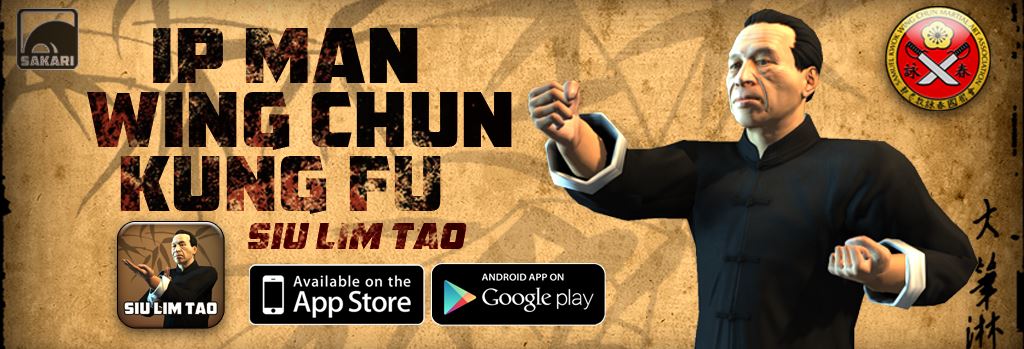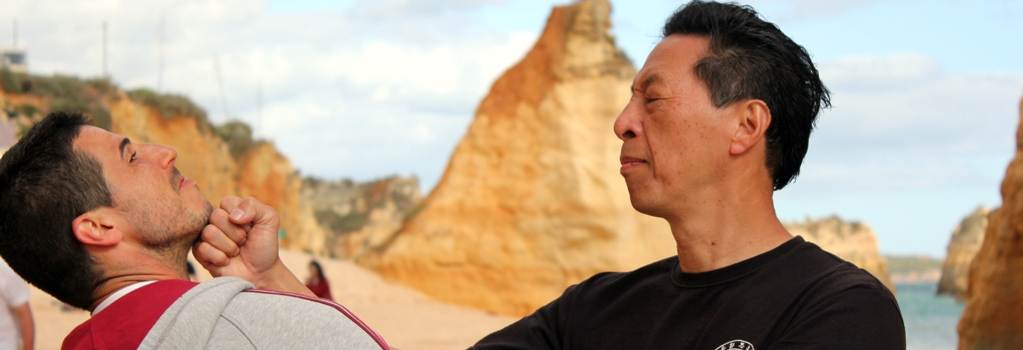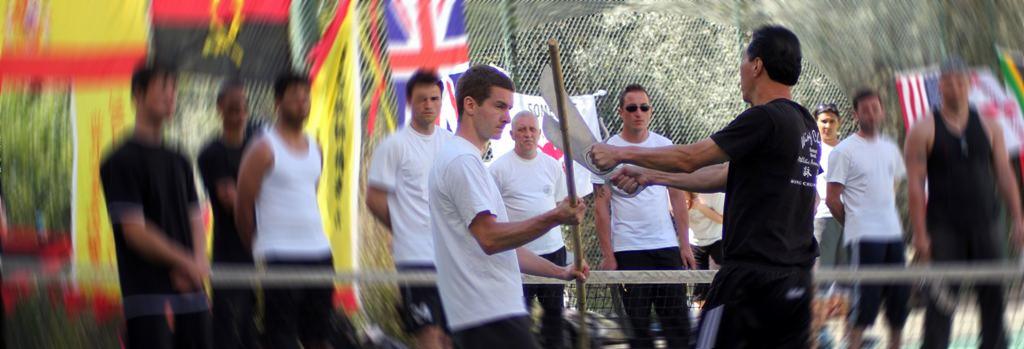Chum Kiu the second form
Article by Dan Knight added on 22 Jul 2012. Last updated on 13 Mar 2014.
Chum Kiu or Seeking the Bridge
There are two main points in Chum Kiu: to avoid [attacks] by turning, and to be stable. I practiced the Lan Sau turning movement in Chum Kiu every day, all day for three months, but my father wouldn't teach me the next movement until I got it right. "You think three months is a long time?" he said, "I followed my master for three years!" - Ip Chun
Wing Chun's second form
Wing Chun kung fu's second form, Chum Kiu builds on the base of knowledge learned in the first form and teaches the practitioner how to use these skills under different conditions ie. with movement and turning.
The Goals / Benefits of Chum Kiu
Chum Kiu makes the student practice a number of useful skills. Some of the benefits of training Chum Kiu are as follows.
- Practice using the turning or Yiu Ma, with techniques to help generate power in strikes and blocks.
- Introduces kicking techniques to the student. Kicking is a vital weapon/component in Wing Chun.
- Introduces Biu Ma stepping to the student. Essential for being able to chase down a target or close the distance to the opponent.
- Practicing the turning will improve the students balance and structure.
- The student will learn to coordinate 2 way energy along side movement. For example the Lap Sau and strike. Or later Bong Sau, Wu Sau together with stepping.
The Second Forms' Structure
 The first section of Chum Kiu teaches how to use turning and techniques at the same time, for example the Bong Sau and Wu Sau are performed whist turning and shifting the body weight from one leg to the other. This is teaching the practitioner to use the hips to develop power or Yiu Ma as it's called in Cantonese. Yiu Ma and body movement in general, is not present in the first form. Chum Kiu is also teaching the practitioner about body positioning when using techniques like the Bong Sau which becomes considerably more effective when combined with turning.
The first section of Chum Kiu teaches how to use turning and techniques at the same time, for example the Bong Sau and Wu Sau are performed whist turning and shifting the body weight from one leg to the other. This is teaching the practitioner to use the hips to develop power or Yiu Ma as it's called in Cantonese. Yiu Ma and body movement in general, is not present in the first form. Chum Kiu is also teaching the practitioner about body positioning when using techniques like the Bong Sau which becomes considerably more effective when combined with turning.
The first section also introduces two way energy as seen when the Lan Sau arm Laps back and a straight punch is delivered. This enables the practitioner to deliver more devastating blows with relative ease as the Laping arm is enabling the transfer of power across the body as the force can flow as one motion without interruption, with the addition of pulling your opponent off balance, the target will also be moving into the punch and so additional damage will be caused. The key to doing this is to learn how to use all the muscles in your body in a short sequence ie. your hips and legs turn and start generating some power, which is then carried on my the shoulders and finally the arm. If you miss time this, you end up just striking with your arm and not using the power of your whole body. The only way to develop this skill is through practice. Chum Kiu is a vitally important way to practice synchronizing the body's movements to work as one unit.
Tip If you can't do the turning Lan Sau in the first section quickly and powerfully without loosing balance, you need to practice more. It should feel natural. If it doesn't get your sifu to help you do the movement until it feels natural and comfortable.
 The second and third sections introduces Wing Chun stepping, this, when combined with techniques, this enables the safe bridging of the gap between the practitioner and his/her opponent. Hence the form is called Chum Kiu or 'seeking the bridge'. It is with contact that the Wing Chun practitioner has his/her biggest advantage, this is, after all one of the areas Wing Chun specializes in and is a big part of why we do Chi Sau. Furthermore the second section of Chum Kiu is building on Sil Lim Tao by making the practitioner use both footwork and kicks with hand techniques such as blocks/covers.
The second and third sections introduces Wing Chun stepping, this, when combined with techniques, this enables the safe bridging of the gap between the practitioner and his/her opponent. Hence the form is called Chum Kiu or 'seeking the bridge'. It is with contact that the Wing Chun practitioner has his/her biggest advantage, this is, after all one of the areas Wing Chun specializes in and is a big part of why we do Chi Sau. Furthermore the second section of Chum Kiu is building on Sil Lim Tao by making the practitioner use both footwork and kicks with hand techniques such as blocks/covers.
Chum Kiu also introduces the Wing Chun practitioner to three different kicks, a lifting kick to block others kicks as done by Ip Chun, a front kick which can be aggressive or defensive as used by Ip Ching, and a turning kick which again can be used to stop the advance of an attacker or strike them if they try to get around the practitioner. The Wing Chun kicks like hand techniques are non committal and do not compromise the balance of the practitioner in any significant way. This is due to their speed and lack of height. Most kicks are delivered to targets below the waist, like the groin or knees.
Also throughout the practice of Chum Kiu the practitioner must use both hands at once. Although this is done in Sil Lim Tao, when both hands are used in the first form they perform the same action whereas in Chum Kiu they do different things, requiring a higher level of ability and concentration from the practitioner.
Therefore Chum Kiu builds on Sil Lim Tao.
Chum Kiu Video
In the following video master Kwok demonstrates the Chum Kiu form in our Kung Fu system.
Related Chum Kiu products
Traditional Wing Chun DVD
 In this DVD Samuel Kwok covers Wing Chun fighting applications, Chi Sau and all 3 hand forms. The Wing Chun 2nd form, Chum Kiu can be learned from the Traditional Wing Chun DVD. The video has all the empty hand forms, as performed by Sam Kwok, along with a lot of bonus footage.
In this DVD Samuel Kwok covers Wing Chun fighting applications, Chi Sau and all 3 hand forms. The Wing Chun 2nd form, Chum Kiu can be learned from the Traditional Wing Chun DVD. The video has all the empty hand forms, as performed by Sam Kwok, along with a lot of bonus footage.
Available To Buy for £12.99



